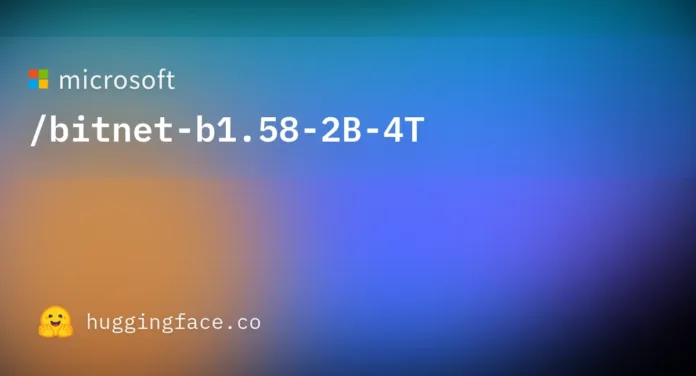The Article Tells The Story of:
- A 2-billion parameter AI model that runs on just 400MB
- Microsoft’s ternary tech beating Llama and Gemma in tests
- No GPU needed—BitNet works on devices like Apple’s M2
- AI’s future may run faster, cheaper, and greener with BitNet
BitNet Enters the AI Race Without a GPU
Microsoft has released a powerful AI model called BitNet b1.58 2B4T. What makes it different is how it stores and processes data. While most AI models rely on 16-bit or 32-bit numbers, BitNet uses only three values: -1, 0, and +1. This method, known as ternary quantization, lets the model store each weight using just 1.58 bits. As a result, BitNet runs using only 400MB of memory—less than one-third of what similar models need.
This change allows the model to run on everyday devices. It doesn’t require expensive GPUs or special hardware. BitNet runs smoothly on CPUs, including Apple’s M2 chip.
Microsoft’s General Artificial Intelligence team developed the model using a different method. Rather than training a full-precision model and then converting it, the team trained BitNet from scratch using ternary values. This helps the model avoid performance losses that usually happen during conversion.
How BitNet Competes with Llama and Gemma
BitNet has two billion parameters. These are the internal values that help the model understand and generate text. Microsoft trained the model using four trillion tokens. That’s about the same as reading 33 million books. This training helps BitNet match or beat other well-known AI models.
In performance tests, BitNet matched or outperformed Meta’s Llama 3.2 1B, Google’s Gemma 3 1B, and Alibaba’s Qwen 2.5 1.5B. These tests covered many tasks like basic math and common-sense questions.
What’s more surprising is that BitNet did all this while using a fraction of the memory. Instead of needing high-end systems, BitNet runs on basic setups. This includes standard desktop and laptop processors.
To support BitNet’s performance, Microsoft also created a software tool called bitnet.cpp. This framework helps the model run fast and efficiently using its ternary weights. The software is available on GitHub and is focused on CPU use. Microsoft may add support for other processors in future updates.
Big Efficiency, Small Energy Use
Most AI models rely on high energy and complex systems to run. BitNet breaks that pattern. Since it uses only additions instead of multiplications, it uses far less energy. Microsoft researchers say the model uses 85% to 96% less energy than other models of the same size.
This change could lower the cost of running AI. It could also reduce the environmental impact of large-scale computing. BitNet could lead to AI models that run directly on personal devices without needing cloud support or energy-hungry data centers.
This could be a major shift. Until now, running AI models meant high costs and energy use. BitNet shows that AI can work differently.
What’s Next for BitNet?
BitNet still has limits. It doesn’t yet support all types of hardware. It needs the custom bitnet.cpp tool to run. And its context window—the amount of text it can handle at one time—is smaller than what top-tier models offer.
Still, the performance so far is impressive. Researchers are still studying why this simple structure works so well. Microsoft plans to improve the model in the future. They want to support more languages and increase how much text BitNet can process at once.
BitNet shows a new way to build and run AI. It proves that small, efficient models can match the performance of larger ones. It also shows that big results don’t need big hardware.
As AI continues to grow, BitNet may change what developers and users expect. Running fast, smart models on everyday devices could become normal—and Microsoft’s BitNet is leading the way.
Stay Updated: Tech News


